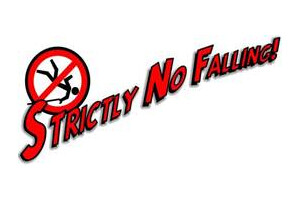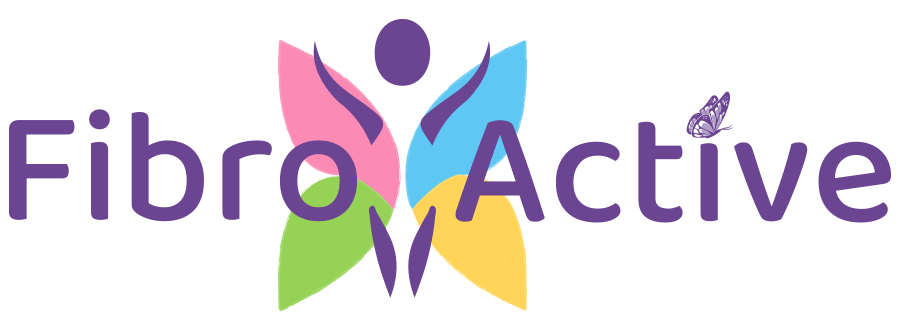For a large percentage of Fibromyalgia and CFS sufferers, we lead a sedentary life style to try to prevent more pain and chronic fatigue. However, we are inadvertently causing more pain and other prominent symptoms. We soon find ourselves on the pain – fatigue – stress – sleep disturbance – stiffness – fog cycle. In our minds, exercise becomes unachievable.
Sadly, with us unable to exercise the conventional way, our muscles decondition and become tight and painful and in turn makes us become more at risk of trips and falls, especially during flares and crashes when we are at our weakest.
From when Jane Gordon our treasurer and I qualified as Tai Chi for Health instructors 3 years ago, our priorities were to reduce the risk of trips and falls. There is also an added bonus because as we improve our strength and balance, our muscles and joints become less stiff and more flexible, helping to reduce pain.
Exercise is Tabu
I have read on many forums and face book pages where sufferers are unable to exercise as it causes more pain or they are afraid to exercise as they will lose their benefits and be forced back to work. Just because we are choosing to do something about our health, it doesn’t mean we are cured or able to work, it means we respect ourselves enough to want to improve our symptoms so that we can have some quality of life, after all, we need our bodies for a few more years yet! If you keep reading comment after comment that you can’t exercise because it causes pain, you will start to believe it before you have even considered it. This adds to the ever-increasing obstacle of lack of motivation, confidence and understanding to overcome.
Yes, I agree that if you have not exercised for a long period of time and spend most of your hours per day on the sofa or in bed, there will be a degree of discomfort when you first start exercising and it will be foreign to your muscles. The key is to start at a very low intensity, practice regularly throughout the week and only increase the intensity when your body is ready. Compared to deconditioned pain, this has to be seen as positive pain as you slowly build your muscles up again. You have to have a degree of hope and determination to get through the early days.
Movement Therapy
To ensure we don’t boom and bust, we also need to look at the type of exercise that we can do without exceeding our limitations. Identifying the type of movements, balance and strength exercises that will benefit us the most without causing extreme levels of PEM, Post Exertion Malaise and increase our pain levels?
Tai Chi and Qigong, Pilates, Yoga, swimming and gentle walks are all recommended as low impact exercises that help build healthy muscles and tone and strengthen our core muscles. Tai Chi especially offers all round benefits for both mind and body, helping to reduce stress. It is challenging to start with as we have to remember the moves and find some sort of coordination. Once you have completed a course it is very rewarding.
Like anything, practice improves performance and when I first started learning tai chi, I wondered why I was putting myself through the classes because I had very low energy levels, I couldn’t stand for more than a minute, I couldn’t hold my arms up and my fatigue levels made it difficult to follow. I am so glad I put myself through the first few weeks and it helped that I had my Fibro/ Tai Chi buddy, Jane to encourage me to keep going. The classes were so beneficial, it got me out of a mobility scooter and walking again and this was a key factor in bringing tai chi into the group programme and us both becoming Tai Chi for Health instructors with an extra Falls Prevention component.

Strictly no Falling
From the time we qualified as instructors, we have developed a close partnership with Strictly no Falling (SNF), an Age UK Derby and Derbyshire project. SNF specialise in falls prevention. Our open community classes are registered under the SNF scheme and we have been very fortunate to receive not only a small set up grant to start the classes but during lockdown we received small grant payments to help us stay connected with our students and it paid for our Zoom instalments. SNF have a variety of Falls prevention classes including; chair-based exercises, posture stability, tai chi and Otago.
Otago
We had never heard of Otago until Jo Briggs the SNF coordinator spoke about it. Jo also mentioned that we would be able to recognise some tai chi movements in the programme and it would benefit our less able members. Jane and I have been training for the last two months and can’t wait to incorporate the exercises into our classes.

What is Otago?
Otago is a home based strength and balance retraining programme, researched and developed by a team at Otago University in New Zealand. It has been proven to decrease the risks of falls by up to a third with people aged over 65 years. It has been designed so that participants can be prescribed individual exercises to be done conveniently throughout the day anywhere in the home. While you are waiting for the kettle to boil, you can fit in a cheeky one leg stand or heel walk to the sink.
The exercises are simple leg raises and steps which make you mindful about how you walk and stand. They progress from seated, fully supported to one hand support and no support. Further progression incorporates ankle weights in the strength exercises that start at 1Kg up to 5kg and increasing repetitions.
These exercises are perfect to help gradually build the strength and balance in our fibro legs. There is no set time so we can pace ourselves throughout the day and if you chose to do them all at once, it takes just 30 minutes. The balance exercises are also a great foundation for transitioning to the tai chi.
There is an initial assessment that will give both the instructor and the participant a foundation to work from. Exercises are prescribed to do 3 days a week and on the in between days, you are encouraged to go for a walk either for 30 minutes or broken into 3 x 10 minutes, depending on your fitness and capabilities.
Although Otago is designed for the home, we will be running classes so that everyone can come together for a bit of a social outing, especially after lock down. When they have reached the top level of Otago, they will have the option to progress to the tai chi for arthritis classes.
Falls Ambassador
In between all this tai chi and Otago training, Jane and I have attended a Falls Ambassador training session. This has given us the chance to attend the Train-to-Train course, so we will be able to run falls awareness sessions for group members and students. We will also be looking at running a small falls prevention awareness event at our hall at some point in the future.
Having an all-round awareness of falls prevention is adding so much value and depth to our programme. We are able to help members and students of all ages and abilities. By tackling the potential issues early enough we will be able to help reduce the risk of trips and falls and prevent the consequences. Our aim is to build the confidence and capabilities of everyone at their own speed.
In the next article we will be looking at how our Walking to Awareness Day campaign is going. This is a virtual walking event run over 6 weeks, encouraging members to upload their steps so we can collectively reach a target and improve our walking and fitness which fits into the Otago programme and our weekly walks which will be finally happening again! Yey! If you would like to join us please visit our activity page to find out how you can join in.

